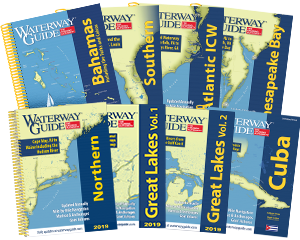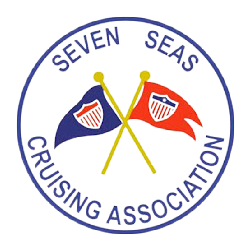We've had a few warm days in here. And the traditional start o' summer- Memorial Day – is but a few weeks away. And thus Summer is close aboard. However, even then the water will be cold for several weeks and you need to be aware of how dangerous that can be – if you aren't prepared and savvy. This column is about that.

Warm Air, Cold Water = Risks!
I like a warm day, early in the season, as much as the next mariner. But the water itself is just about as deadly as it is in the deep of winter. Remember that water takes heat from your body 25x's faster than air of the same temperature. You can impress this on your young boaters – and yourself – quite easily. Lay out a glass of water before you turn in one night. It will be room temperature by the morning. Now take two ice cubes from the freezer. Put one on a dry napkin next to the room-temperature glass on water. Drop the second ice cube into the glass. Now, in theory, they are both exposed to the same temperature – room temperature. But when the ice cube on the napkin starts to show a damp line around itself, the ice cube in the glass will have melted away. This is why hypothermia is so insidious and dangerous.
Precautions? Yes!
OK, it is a beautiful day in May and you're just dying to tool out for awhile. And why not – how great is it when the waters are too cold for the algae and other microscopic sea life so can you can see all the way to the sandy bottom? Great indeed but don't make way without a few simple but important precautions.
Step #1
Has the engine been prepped from its long winter snooze? Are you fueled up? Is there some fuel enhancer thrown in? Certainly, there is likely to be some condensation in the tank and that water will precipitate down to the bottom of the tank… and some might get sucked up into the engine… So, engine prepped, fuel tank full and fuel enhancer thrown in – or no-go!
Step #2
Did you file a float plan with somebody? Do it – or no-go. If you do end up in trouble, getting the "rescue clock" started ASAP is imperative. The environment is inherently more dangerous when the water is cold.
Step #3
If you don't have cold-water life jacket gear, you're playing Russian Roulette with your own life. When we put to sea, if the water temperature is 60-degrees F or less, USCG regulations require us to be in "mustang" suits – which aren't as encompassing as a dry suit but certainly offers us significant protection in the event of an immersion. Admittedly, when the air is warm, those "mustangs" are like Turkish steam baths but we're safe. At the very least, a float coat provides warmth and at the same time doubles as a life jacket that will float a person. Just acknowledge that it isn't as safe as a "mustang."
Be sure that your flotation gear has a whistle and an emergency strobe light attached. If you've invested in a Personal Locator Beacon, great. And a reflector mirror would be superb. You can signal over 20 miles with one smaller than the size of your fist. Airline pilots are trained to call in sightings of targeted reflections.
Step #4
Review cold water survival techniques and risks with your crew.
- If you fall in, get out. Even if you have to climb onto the hull of the over-turned boat (yes, Bunky, that happens!), get out. Remember the ice cube experiment.
- Limit your movements! Strenuous activity increases your heart rate, which increases the rate that blood, cooled at the surface of your body, is circulated to the central core – where it will kill you. Assume a heat-emitting lessening position – in the water or out (HELP.) Cross your legs to protect your groin area from giving up heat. Put your arms across your chest and your hands under your arm pits to do the same thing.
- If you're a 200-lb man, here is a rough guideline of your survival time:
temperature of water: expected survival time
70–80° F (21–27° C): 3 hours – indefinitely
60–70° F (16–21° C): 2–40 hours
50–60° F (10–16° C): 1–6 hours
40–50° F (4–10° C): 1–3 hours
32.5–40° F (0–4° C): 30–90 minutes
<32° F (<0° C): Under 15–45 minutes
If you're smaller, less time. If you're larger, more time. And have a good meal before you make way. It will warm your body from the inside as the fires of digestion do their work.
BTW, if you are interested in being part of USCG Forces, email me at JoinUSCGAux@aol.com or go directly to the US Coast Guard Auxiliary "Flotilla Finder" at http://www.cgaux.org/units.php and we will help you "get in this thing . . ."












